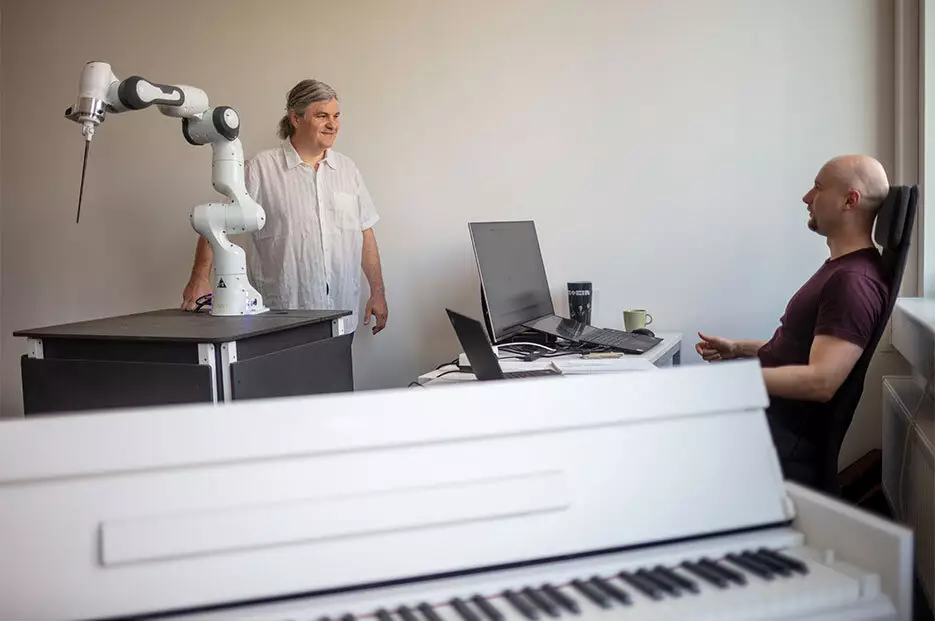In a groundbreaking event that explores the marriage of technology and music, an innovative three-armed robot has taken to the stage in Dresden, Germany, showcasing its potential as a conductor. The robot’s design, reminiscent of futuristic instruments from popular culture, draws attention not just for its visual appeal but also for its unique ability to interact with live musicians. This debut symbolizes a shift in the role of technology within the performing arts, as the robot conducts pieces tailored to highlight its remarkable capabilities.
The concept of utilizing technology in conducting has advanced significantly in recent years. With the robot able to manipulate each of its three arm-like appendages independently, it presents a novel approach to orchestral direction. Traditionally, conductors rely on a single set of gestures to communicate with their musicians, but this robotic innovation allows for a more intricate and precise direction of diverse musical elements. During its inaugural performances, the robot led the Dresdner Sinfoniker orchestra through complex compositions, such as Andreas Gundlach’s “Semiconductor’s Masterpiece,” effortlessly coordinating the different sections of the ensemble.
The inception of this robotic conductor is credited to groundbreaking research at Dresden’s Technical University, where engineers and musicians collaborated to create a “cobot” — a collaborative robot designed to work alongside humans rather than replace them. Gundlach emphasized that his work with the robot required an extensive understanding of not just the technicalities of conducting, but the intrinsic artistry involved. This project spanned two years, showcasing the importance of patience and meticulous training in bringing the robot to life. Gundlach’s reflections on the creative process have led to a greater appreciation of human musicianship, revealing the depths of talent and expressiveness that make a conductor irreplaceable.
As the audience witnessed performances where the robot elegantly guided musicians through multifaceted scores, the dynamic between human performers and their robotic counterpart became apparent. The robot’s dual conducting arms also shone during the performance of “#kreuzknoten,” composed by Wieland Reissmann. This piece required the orchestra to play at varying tempos simultaneously, showcasing the robot’s ability to manage complexity in ways that could, in some respects, enhance the musical experience. Gundlach’s insights into the conducting style necessitated by the robot hinted at a future where technology can enhance—not hinder—the artistry of musicians.
The introduction of robotic conductors presents a fascinating dialogue about the future of music and technology. While some may question the potential of machines in the arts, the Dresden experiment demonstrates that robots can enhance the nuances of musical performances when designed thoughtfully. As this technology continues to evolve, it invites both musicians and audiences to explore new dimensions of artistic expression. Ultimately, the embrace of robotic conductors may not signify the end of human leadership in music, but rather signal the beginning of a collaborative era where both man and machine coexist harmoniously on stage.


Leave a Reply